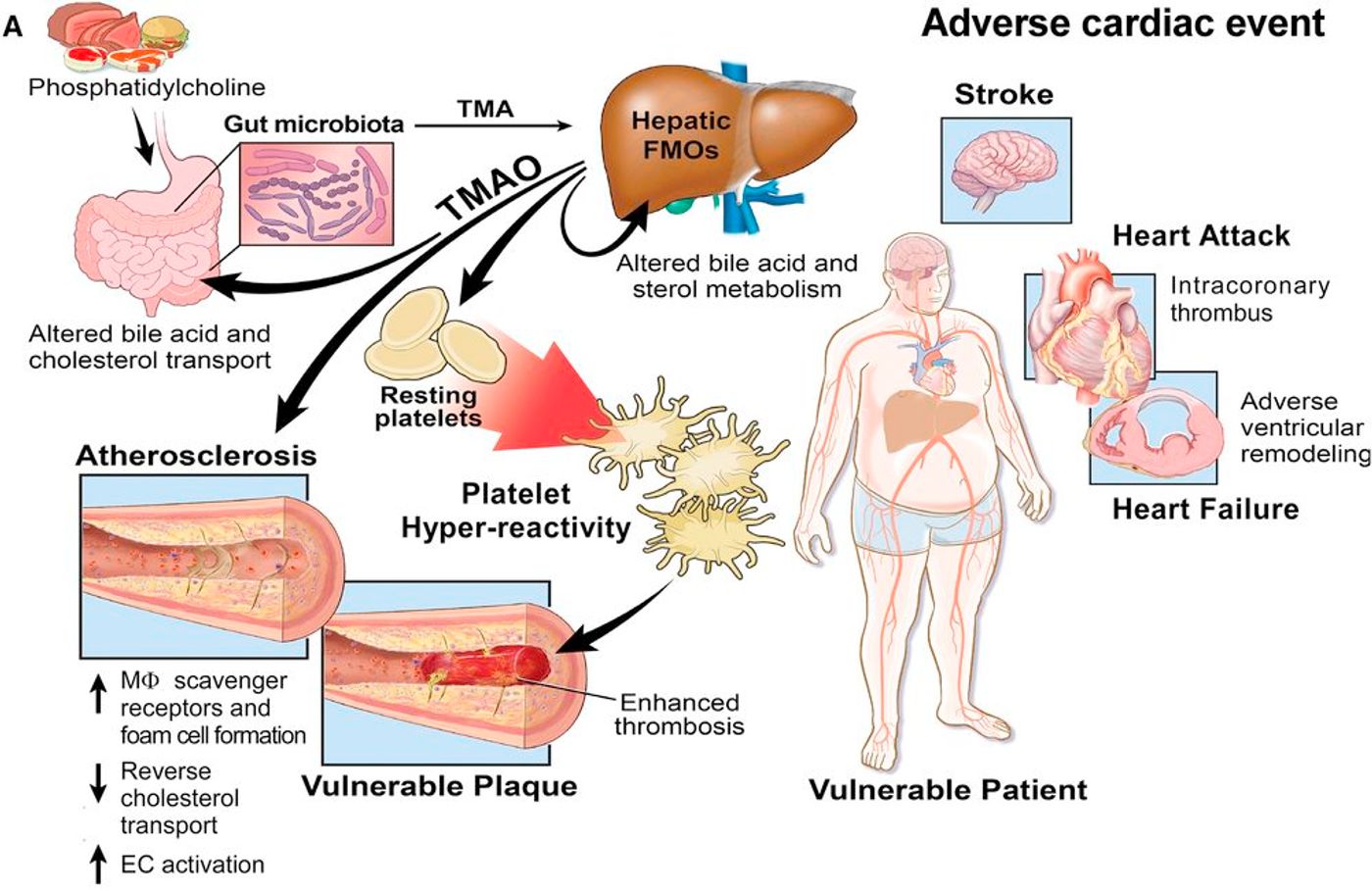A dietary compound called trimethylamine N-oxide (TMAO) is found in foods like eggs and meat and has been associated with heart disease. In the past, scientists have warned people to eat less of these foods because of their TMAO levels, but a new study from Cornell University provides evidence that TMAO might not be the root of the problem.
Eggs are a rich source of choline, a nutrient first discovered to be essential by UNC Chapel Hill Nutrition Research Institute Director Steven Ziesel, MD, PhD. Choline is especially important for pregnant women, as it helps reduce the risk of neural tube defects and other diseases. However, in the presence of a gut bacterial species called firmicutes, dietary choline obtained from eggs is converted into TMAO.
“A person's gut microbiome can influence circulating TMAO," said senior author Marie Caudill, PhD. "It begs the question whether the gut microbiome is playing a role in the disease process rather than the TMAO itself."
Similarly, a compound isolated from meat called carnitine is also transformed into TMAO by firmicutes bacteria. Carnitine brings long-chain fatty acids to the mitochondria, playing a vital role in cellular energy production.
Studies done within the last five years have linked high levels of circulating TMAO to people with cardiovascular disease, the formation of arterial plaque in mice, and the onset of colon cancer in women. With the only understanding of TMAO at the time being that it came from fish, eggs, and meat, researchers tended to advise people to eat less of these foods.
However, these studies are partially contradictory to what scientists known about omega-3 fatty acids in fish helping to reduce the risk of heart disease, a conclusion made from decades of research from many different research groups. This brings us to the current Cornell University study, recently published in
Molecular Nutrition and Food Research, that provides much needed clarity on the true role of TMAO and firmicutes on the risk of cardiovascular disease.
Scientists fed 40 healthy and young male participants four different meals, given in random order in a single day separated by a one-week “washout period.” To represent the nutrients come from fish, eggs, and meat, meals included: 6 ounces of cod, three hard-boiled eggs, 6 ounces beef patty, and an applesauce meal serving as a control. They collected feces samples before each meal to measure gut microbiota compositions and blood and urine samples to measure levels of circulating TMAO.
Their results did show a group of men with elevated TMAO levels after eating the eggs and beef meals, but these men also had higher levels of firmicute bacteria in their gut and were more likely to have a less diverse gut microbiome. On the other hand, the men with lower levels of TMAO had higher levels of a different class of gut bacteria: bacteriodides.
Numerous studies in the past of the human microbiome have shown that a more diverse population of gut bacteria is linked to lower incidence of disease - read more about the gut microbiome and human health
here.The present study’s results suggest that without a certain population of gut bacteria, which appear to be associated with a lack of microbiota diversity, nutrients from eggs, fish, and meat would not be transformed into TMAO, and these people would not be at a higher risk for cardiovascular disease for eating these foods.
“TMAO may simply be a biomarker of differences in the gut microbiome," Caudill said. "Whether it's heart disease, cancer or other chronic diseases [diseased individuals] are going to have a different microbiome than non-diseased individuals, and that microbiome can be marked by TMAO levels in the blood."
Sources:
Cornell University,
University of North Carolina at Chapel Hill Nutrition Research Institute,
National Institutes of Health Office of Dietary Supplements
Images: www.morninghealthnews.com, popsci.com









